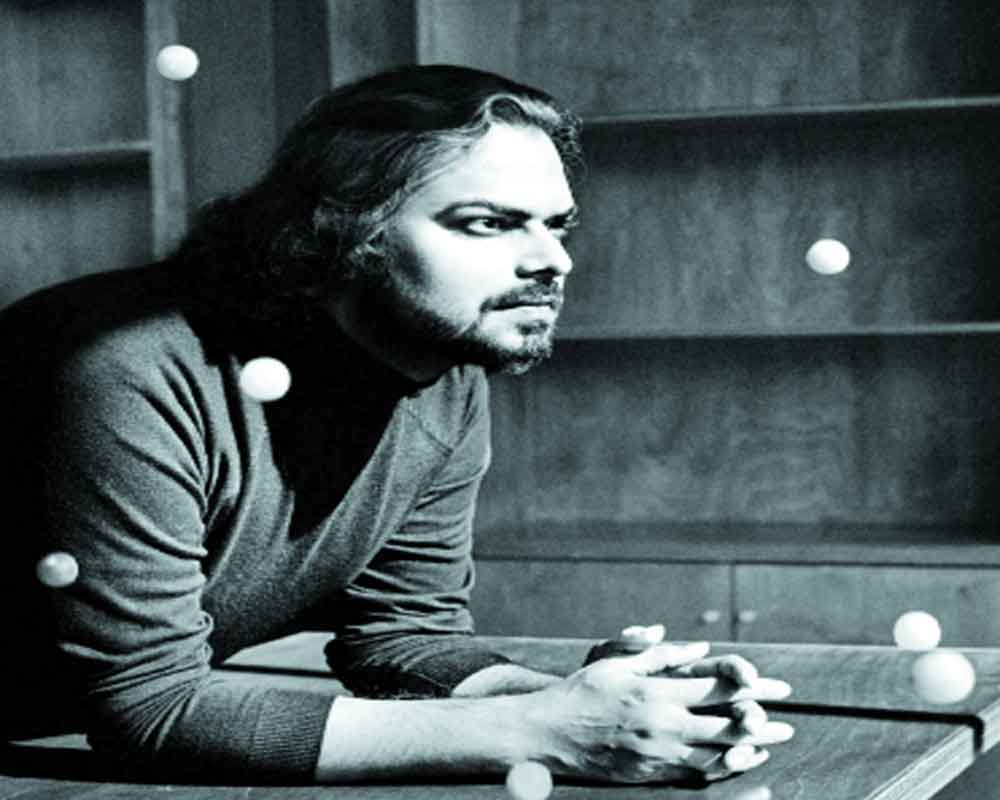Designer Rahul Mishra and jeweller Sidharth Kasliwal interpret the Sixth Sense as memory and déjà vu. By Chahak Mittal
Unresolved disputes, past memories, false hopes and fables, bad thoughts and habits, they say might come to an end if one listens to his/her sixth sense and try to quieten the mind through delving deep into what went wrong in pursuit of things.
Described as the sleight of hand, something in the air, the eureka moment, inspiration out of the blue —extrasensory, intuitive and intangible — Sixth Sense is known to be the moment of enlightenment. Interpreting the feeling in five different ways, Chivas 18 Alchemy had five maestros from the world of fashion, art and design who have paved a way to explain how the sixth sense could change one’s outlook on life.
Through a play of mirrors and reflection, designer Manish Malhotra introduced the sixth sense through the feeling of intuition, Sudarshan Shetty did it with love, designer Rahul Mishra and jeweller Sidharth Kasliwal did it through memory and deja vu.
Sidharth’s bejewelled masterpiece revived the lost art of craftsmanship handed down by generations, paving a way for deja vu to happen.
Explaining why the internationally-acclaimed designer used memory as his idea of the sixth sense, Rahul says, “Memories are the biggest things that shape the conscience of every human being. They are most intimate things which people own. No two people can have the same memories. Even two siblings would have different memories of growing up and their childhood. It’s something very personal, yet very open. If you live for a 100 years, yet you would only be able to remember and retain only about 20 to 25 or 30 to 35 big islands that created a major impact in your life. Hence, I wanted to bring out in people the emotion that is common to all yet deeply personal and exclusive.”
As the designer completed 10 years at the Fashion Week this year, he explains that his memories are extremely important for him because they are an “inspiration” for him to go on and the only things which keeps him going. “I have just completed 10 years with the Fashion Week. And the first four seasons, I used to be under great pressure and burden myself with apprehensions. The same happened even at the Paris Fashion Week. However, the formula to do things there was finding to do them in my own way. My designs and work have always been inspired from the memories of my childhood. And today, even in Paris, they have been so accepting and welcoming of them,” says he.
He feels that since the time his daughter, Aarna, has been born, he has been “re-living” his childhood memories through her. This, he believes, makes him realise that he is “getting more comfortable in sharing my reminiscences, even in the city of romance. Now, they love listening to all my memories.”
Growing up in a sleepy village 53 miles off Kanpur in Malhausi, Rahul’s childhood was full of stories. He recalls them and says that today he feels that the best part about his career is, that he is “comfortable about my memories that even the audience readily accepts and celebrates them with me.”
Now, working with Chivas, “I want to reflect back on them as well.” He says that memories are “kind of bottled inside you in which you keep pouring things and when they finally come out, they become a manifestation of objects, stories and moments.”
As a designer, he feels that foundation and concept is the most intimate thing. For instance, when a person enters inside a building, s/he observes the architecture, glossy tiles, mirrors and glasses, floor, and its structure. However, he feels there is one thing which goes unnoticed — foundation and the process that resulted in its creation. Rahul calls this foundation as the soul of a being. “It is like the soul which one can’t see, but feel. When my garments come on the runway, you can feel that soul coming with them,” he explains.
His presentation displayed 18 of his artworks — all white on white — which were a reflection of the old artworks that he has showcased throughout these 10 years, 20 seasons. Using tambour frame hoops and creating a chandelier of memories in a play of light and shadow, the designer blends layers of time with the ingredients found inside the scotch whisky.
He says, “I have used all things natural and the ones that the brand uses — flowers and fruits. I have engaged the audience to also remember from their recollection that which collection was a particular artwork from. It’s like a double engagement made in the memory in an interactive way. I have handcrafted different small pieces and shown them in a similar light. They are made purely from organza and are hand-woven. They are made in a way that they create a reflection of the artwork on the floor in black and white, acting as a metaphor to reflecting upon my journey untill now.”
He says that it was a difficult thing to conceptualise and implement. However, his motive was to make people realise that if a person tries to wipe out even a single memory, it will have a butterfly effect and life’s meaning will change drastically. “Hence, this is how even the smallest of memories can change your life,” says Rahul.
As he signs off, he adds, “I strongly feel that all the academic subjects are important for our pursuits of living life, but drama, poetry, love, emotions and shayari, is what we live for!”


























